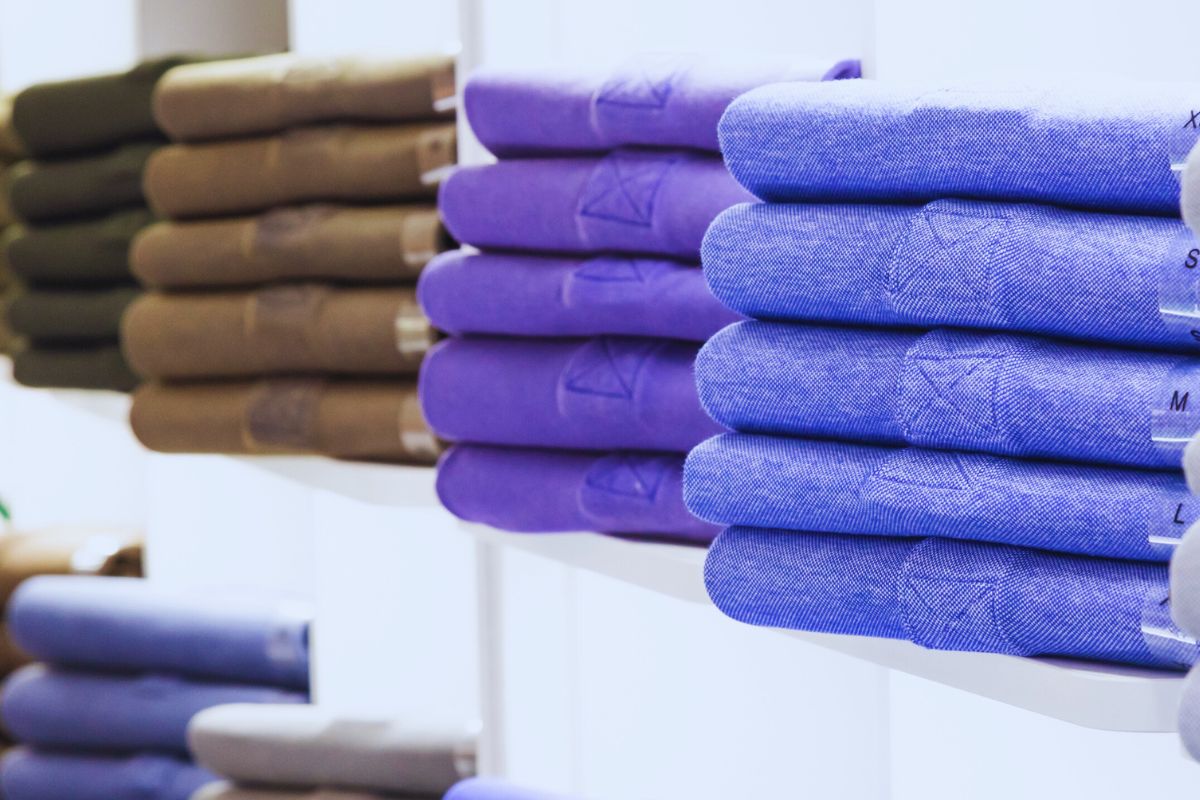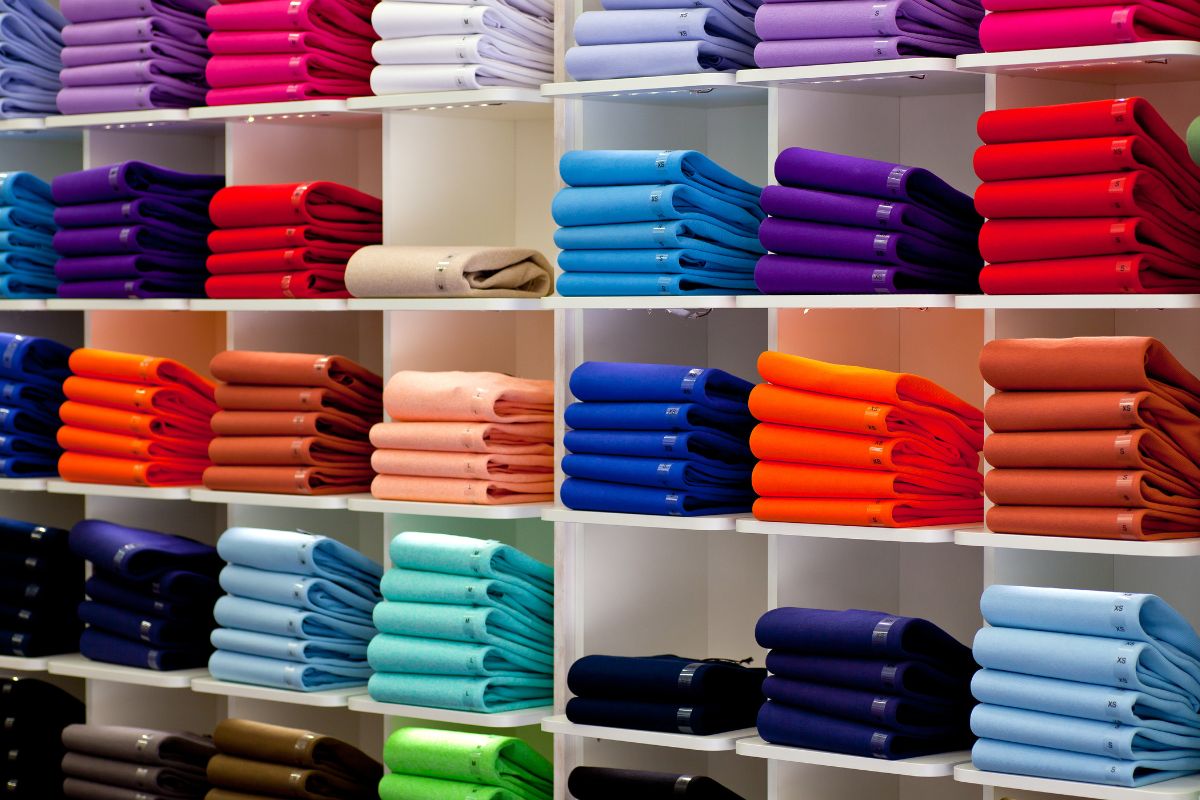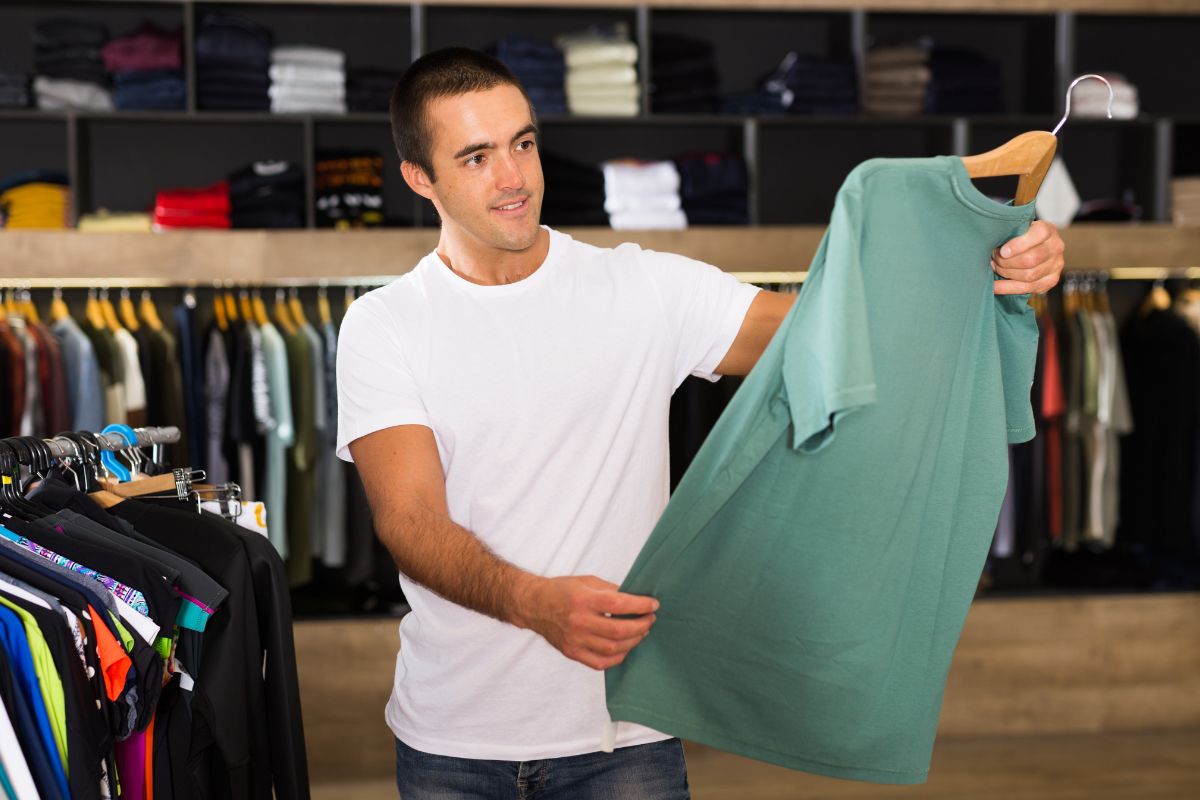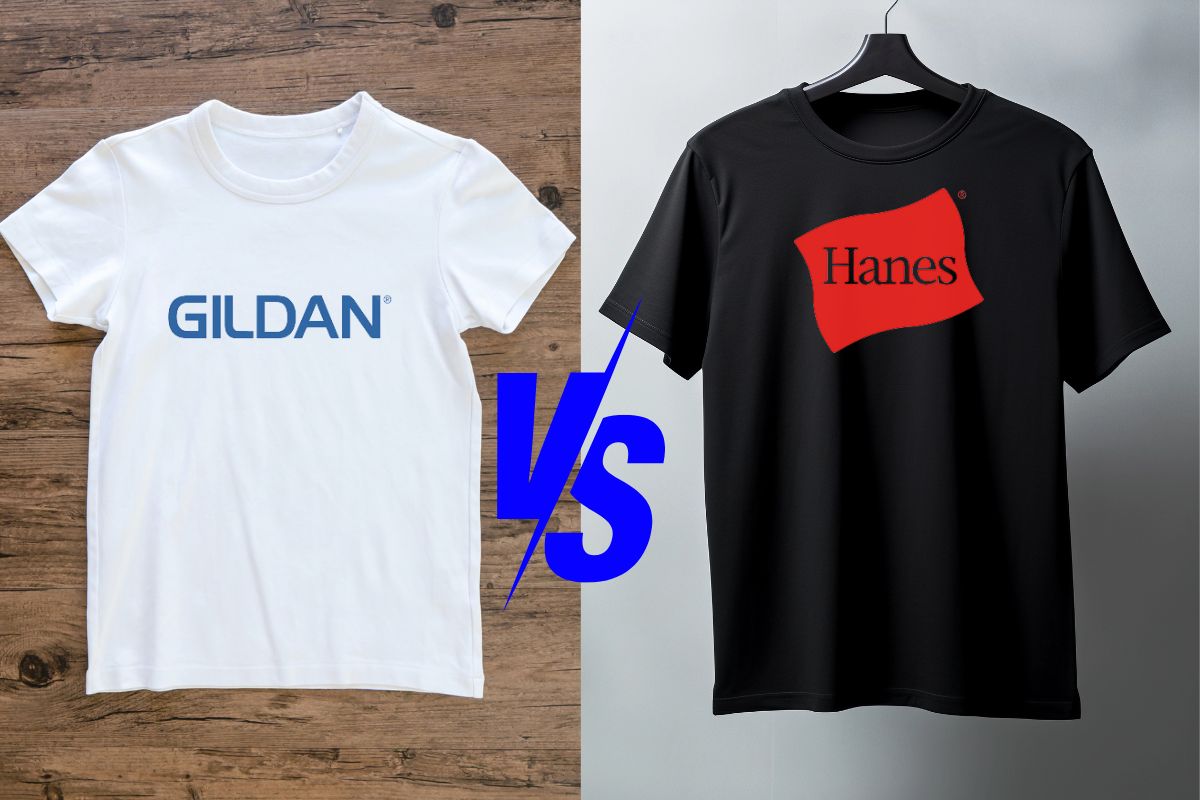When you’re out shopping for new clothing, particularly t-shirts, you might come across the term “retail fit.” This refers to a style of t-shirt that’s tailored to fit closer to the body compared to the traditional boxy cut of standard tees. With a retail fit, the shirt is designed to contour more accurately to your shape, providing a flattering silhouette that aligns better with current fashion trends. It’s an important factor to consider, as the fit can significantly impact your comfort and the overall look of your outfit.
The design of a retail fit t-shirt considers several elements to enhance how it sits on your body. The sleeves of a retail fit tee are typically designed to be snugger with a shorter length to avoid the baggy appearance that can happen with standard fits. Moreover, the body of the shirt often has a slightly tapered shape to reduce excess fabric around the waist and torso. This attention to fit detail ensures that the tee neither clings too tightly nor looks oversized, aiming for that just-right fit that appeals to a wide range of customers seeking a modern, clean look.
Selecting the right size when purchasing a retail fit tee is crucial, as this impacts the ultimate fit. Most people tend to err on the side of buying a size too large for comfort, but in the case of retail fit, this could undermine the intended style. So, when you’re updating your wardrobe with new shirts, remember that retail fit sizes might differ from what you’re used to with standard tees, emphasizing the importance of knowing your measurements and possibly trying on different sizes for that ideal fit, enhancing your overall shopping experience.
Understanding Retail Fit
When you’re shopping for clothing, especially t-shirts, retail fit is a term you’ll often encounter. Unlike the classic fit, which tends to be more generous and boxier, retail fit is designed to be more tailored to the body’s shape, providing a look that’s both stylish and comfortable.
Retail fit features:
- Tailored sides: These contour more closely to your body, eliminating the boxy look.
- Sleeve length: Retail fit shirts often have shorter sleeves, for a snugger fit around the arms.
Being aware of the different fits is crucial to ensure you find a t-shirt that meets your personal style and comfort level. Retail fit often falls between the looser, comfortable classic fit and the very snug fashion fit.
When brands mention retail fit, they’re hinting at a cut that’s engineered to flatter most body types without compromising on comfort. Consider your brand preferences as well, as some brands may offer more tailored fits, while others might lean towards a relaxed style.
Remember, the right fit for you is one that aligns with your comfort and your style preferences. When you pick a retail fit garment, you’re choosing a fit that’s not just functional but also fashionable, aiming for a balance that makes you look and feel good.
The Significance of Fabric in Retail Fit

The fabric in retail fit garments plays a pivotal role in both the look and feel of the clothing. Understanding the materials and types of fabrics used can help you make informed choices for comfort and durability.
Materials and Quality
Quality is paramount when it comes to selecting fabric for retail fit t-shirts. You’ll often find that premium tees are made from 100% cotton or ring-spun cotton. These materials are favored for their softness and breathability, providing a comfortable wearing experience. 100% Airlume combed cotton takes the quality a notch higher, offering a smoother surface and a more consistent weave, which is ideal for a closer-fitting retail silhouette. Beware of lower-quality cotton that may be rougher to the touch and prone to shrinking after washing.
- High-quality Materials:
- 100% Cotton: Breathable and soft.
- Ring-Spun Cotton: Durable and finer feel.
- 100% Airlume Combed Cotton: Least amount of impurities, smoother feel.
Fabric Types
When it comes to fabric types for retail fit, you’re likely to encounter a blend of materials. While pure cotton is known for its comfort, incorporating polyester can enhance the t-shirt’s shape retention and durability. A fabric blend is often a practical choice, as it combines the softness of cotton with the resilience and easy care of polyester.
- Common Fabric Blends:
- Cotton/Polyester: Balanced comfort and durability.
- Tri-Blends: Mix of cotton, polyester, and rayon for a lightweight and form-fitting feel.
Selecting the right fabric is a fundamental consideration for a well-fitted garment that stands the test of time and continues to feel comfortable with each wear.
Design Elements of Retail Fit T-shirts
In the realm of retail fit t-shirts, design intricacies play a pivotal role in enhancing both aesthetics and comfort. The structure is fine-tuned with attention to form, ensuring a more flattering appearance.
T-shirt Structure
Retail fit t-shirts stand out with their contoured structure. These aren’t your standard, boxy tops; rather, they echo the natural lines of your body.
- Side Seams: Unlike tubular tees, retail fits feature side seams that create a structured, body-hugging profile.
- Sleeves: Sleeves are often more fitted, reducing excess fabric and providing a sleek look.
- Length: The length is typically adjusted to prevent the shirt from bunching up, ensuring it sits just right.
- Shoulder: Shoulder seams are designed to align closely with your natural shoulder line, promoting a neat, polished silhouette.
- Collar: Collars are meticulously crafted to lie flat without sagging, contributing to the shirt’s sharp design.
Innovative Features
Retail fit t-shirts may incorporate features that elevate both their functionality and style.
- Moisture-wicking Fabric: Some retail fits utilize light, breathable materials that help wick away moisture, keeping you cool and dry.
- Stretchability: Look for elastane or spandex blends that offer a slight stretch, providing better mobility without sacrificing form.
- Durability: Despite their refined appearance, retail fits are designed to withstand regular wear and laundering, retaining their shape over time.
By focusing on these design elements, your retail fit t-shirt not only flatters but also performs well in a variety of settings.
Color and Visual Aesthetics

In retail fit, the strategic use of color and visual design elements plays a critical role in attracting and engaging customers within your store environment.
Color Significance
Red: Known for its vibrant and attention-grabbing hue, red often signifies urgency and is commonly used in clearance sales. When you incorporate red into your retail space, you’re harnessing a color that can stimulate and excite the customer, potentially increasing the likelihood of impulse purchases.
- Impact on mood: Different colors evoke different emotional responses; choosing the right palette can set the desired mood in your store.
- Aesthetics: Your store’s aesthetics are defined by the color scheme, which should align with your brand identity to create a cohesive shopping experience.
Graphics and Branding
Graphics: Incorporating graphics into your retail space is an effective way to communicate your brand’s message and can influence purchasing decisions by creating a visual narrative for your products.
- Brand identity: Graphics help solidify your brand identity. The consistent use of specific design elements makes your brand more recognizable and memorable.
- Dyeing and Ink: The quality of your graphics depends on the dyeing and ink methods used. High-quality dyeing processes ensure colors stay true and vibrant, while the right ink guarantees that your graphics remain crisp and don’t fade over time.
Sizing and Fit for Different Body Types

When you’re choosing a retail fit t-shirt, the goal is to find one that complements your body type while aligning with your personal style preferences. Retail fit implies a more tailored approach than traditional boxy shirts, offering a snug fit that contours more closely to the body. The importance of selecting the right size cannot be overstated, as proper fit immensely impacts comfort and appearance.
Unisex Styles
Unisex t-shirts are designed to cater to a broad audience, usually adopting a middle ground between fitted and relaxed. The key is to consider body measurements, as unisex styles might not accommodate the nuances of all body types.
Tailored to Your Shape
Body Types:
- Petite: Aim for shorter sleeves and a snug fit to avoid excess material.
- Plus-sized: Look for a fitted but not tight style to flatter your curves.
- Athletic: Focus on shirts that highlight your physique without restricting movement.
Sizing Tips
- Measure Yourself: Use a tape measure to get accurate bust, waist, and hip measurements.
- Check Size Charts: Always refer to the brand’s size chart as sizing can vary between manufacturers.
Remember, preferences vary, and what is ideal for one person may differ for another. Your best fit is one that feels comfortable and boosts your confidence.
Production Techniques in Retail Fit Apparel

When you purchase retail fit apparel, you’re experiencing the result of meticulous production processes that include precise cutting and sewing, specialized dyeing and printing techniques, and rigorous quality control.
Cutting and Sewing
Your retail fit garment likely began as a pattern on high-quality fabric, often 100% Airlume combed and ring-spun cotton, which is known for its softness and smoothness. Cutting the fabric is a critical step that shapes how the garment will fit your body. For instance, Bella Canvas T-shirts are cut to ensure a tailored fit that contours more closely to the body than traditional boxy t-shirts. During sewing, special attention is given to the construction—companies may use tubular knitting to reduce seams, enhancing comfort and fit.
Dyeing and Printing
Dyeing your apparel involves saturating the fabric with color to achieve a consistent, vibrant hue. In retail fit production, dyeing is often executed with precision to maintain the fabric’s quality and feel. Printing, on the other hand, adds designs or patterns to the garment. Retail fit apparel may go through advanced printing techniques to ensure the print’s durability without compromising the fabric’s integrity or fit.
Quality Control
Once your garment is cut, sewn, dyed, and printed, it undergoes quality control. This step ensures that each piece of clothing meets the brand’s standards for size, fit, and finish. Retail fit apparel, in particular, requires careful inspection to uphold the promise of a superior, body-contouring fit. Each item is checked for consistency and any defects before it moves on to fulfillment, where it’s prepared for distribution to stores or directly to consumers.
The Tech Influence on Shopping Experience

Advances in technology have revolutionized your shopping experience, from the ambiance of the store you walk into, to the ease with which you browse products online.
In-Store Technology
When you shop at a brick-and-mortar store, technology plays a subtle yet significant role in enhancing your experience. Here’s how:
- Lighting: Smart lighting systems create an environment that highlights products and guides you through the store, often resulting in a more pleasant and engaging shopping experience.
- Product Placement: Intelligent shelving that utilizes sophisticated analytics can ensure products are placed where you are most likely to notice and interact with them, which can simplify your decision-making process.
- Signage: Digital signage can offer you personalized deals and information, making your shopping experience feel unique and catered to your interests and needs.
Online Shopping Enhancements
Your online shopping journey has been elevated through various technological enhancements:
- Websites and Apps: Retailers use responsive design to ensure that their online stores are accessible and user-friendly, no matter the device you are using.
- Personalization: Technologies such as AI create a personalized shopping environment by suggesting products tailored to your preferences and previous shopping history.
Remember, each touchpoint has been thoughtfully designed with technology to create a seamless and efficient shopping experience for you.
Consumer-Brand Relationship

When you explore the concept of retail fit, understanding the consumer-brand relationship is crucial. This relationship is the bond that forms between you and a brand like Bella + Canvas, based on various interactions and experiences which impact your perception and trust in the product or company.
Characteristics of a Strong Consumer-Brand Relationship:
- Trust: You are more likely to repeatedly purchase from a brand when you trust their consistency and quality.
- Brand Identity: A clear identity provides you with a sense of understanding and alignment with the brand’s values.
- Emotional Connection: When a brand consistently meets your expectations, an emotional bond is formed that goes beyond transactional engagements.
Bella + Canvas, for example, may work to foster this relationship through a transparent and consistent brand identity that aligns with your personal values and expectations.
Key Benefits for You & the Brand:
- Repeat Purchases
- The stronger the relationship, the more likely you are to return.
- Advocacy
- A trusted relationship may lead you to recommend the brand to others.
- Feedback and Improvement
- Engaged consumers often provide valuable insights, helping the brand to improve.
Building a robust consumer-brand relationship is a dynamic process that benefits both you and the brand in question. For Bella + Canvas, instilling a strong brand identity, trust, and consistent positive experiences are essential steps in maintaining a loyal customer base.
Retail Environment and Presentation
Your retail store’s success heavily relies on how you present your space and merchandise. A well-thought-out store layout and strategic product display can lead to increased sales.
Store Layout
Your store’s layout should guide customers through a journey, starting from the moment they walk in. It should be intuitive and facilitate a clear path that showcases key products and leads to sales areas. Use lighting to highlight new arrivals or featured items, and ensure signage is visible and informative, helping customers navigate your store with ease. Position the checkout area so it’s easily accessible, but also allows space for last-minute purchasing decisions.
- Entrance: Maximize visibility for your retail store’s special offers.
- Pathways: Ensure aisles are wide enough for comfortable navigation.
- Cash Wrap: Place impulse buys near the checkout to encourage additional sales.
Product Display
Effective product placement is critical in a retail environment. Your products should be displayed using a mix of shelving, hanging, and stacked presentations. Bold labels and clear pricing help facilitate a hassle-free shopping experience.
- Shelving: Use at staggered heights to draw the eye through the store.
- Mannequins: Display products in use to provide context.
- Feature Displays: Place seasonal or promotional items in high-traffic areas.
Remember, your retail environment acts as a silent salesperson; with every element, you are communicating value and brand promise to your customers.
After-Sale Activities and Customer Support

After you’ve made a purchase, the quality of after-sale support can significantly influence your satisfaction and loyalty. Activities like processing returns and incorporating feedback into business improvements play a crucial role in maintaining a positive retail experience.
Customer Care and Returns
Your right to a smooth return process is assured with effective customer care. Should you find a product unsatisfactory, you’re entitled to support that helps manage returns swiftly and efficiently. Pertinent product information is crucial to minimize misunderstandings and streamline this process. With a robust customer care system in place, issues like defective merchandise or unsuitable products can be resolved through a managed return protocol that aligns with the company’s policy.
- Return Procedures:
- Contact customer care
- Receive and provide product information
- Facilitate pickup or drop-off
- Complete the return in the ERP system
Feedback and Improvement
Your feedback is a powerful tool for retail improvement. Feedback mechanisms encourage you to share your experiences, which companies analyze to enhance their offerings. Through customer insights, businesses refine their products, support services, and delivery processes. Moreover, this cycle of feedback and improvement is a testimony to a brand’s commitment to quality and customer satisfaction.
- Feedback Process:
- Submit feedback via surveys or direct communication
- Companies assess and integrate feedback
- Continuous improvement in services and products
- Updates provided through training and revised support materials
Sustainability and Ethical Considerations

As you navigate the retail landscape, it’s imperative to consider the impact of your choices on the environment and society. Your decisions about materials and practices have the power to foster sustainability and ethical responsibility.
Eco-friendly Materials
When selecting materials for your retail operation, prioritize eco-friendly options. These are materials that minimize harm to the environment during their lifecycle—from extraction to disposal. Choosing green materials, such as recycled or biodegradable fabrics, can reduce water usage and energy consumption during their manufacturing and drying processes. For example:
- Organic Cotton: Uses less water and is free from toxic pesticides.
- Bamboo and Hemp: Grow quickly and typically require no pesticides or fertilizers.
In packaging, consider using materials that can be recycled or repurposed to minimize waste, known as shrinkage, in your supply chain.
Sustainable Practices
Adopting sustainable practices requires a modern approach that aligns with both ethical standards and your budget. Implement strategies focused on reducing your carbon footprint, managing resources efficiently, and ensuring fair labor conditions. Here are some practices you can introduce:
- Energy Efficiency: Use LED lighting and energy-efficient appliances in your stores to cut down on energy use.
- Water Conservation: Implement water-saving techniques such as low-flow fixtures and water recycling systems to manage this precious resource carefully.
- Product Lifecycle: Offer repair services or recycling programs to extend the lifecycle of the products you sell.
Frequently Asked Questions
When selecting a shirt, understanding the fit is crucial for comfort and style. Here’s a breakdown of retail fit and how it compares to other fits.
What distinguishes retail fit shirts from other types of shirt fits?
Retail fit shirts are designed to be slightly tapered to contour the body without being snug. They provide a modern silhouette that is less boxy than traditional fits.
How does retail fit sizing compare to standard sizing charts?
Retail fit sizing typically follows standard sizing charts but offers a more tailored cut. The measurements are closer to your body compared to classic or regular fit garments.
What are the characteristics of a retail fit in Bella+Canvas apparel?
Bella+Canvas retail fit apparel features a more fashioned cut with smaller armholes and a snugger fit through the body, offering a contemporary look and feel.
What is the difference between classic fit and retail fit in clothing?
Classic fit clothing is cut with a looser silhouette for a more relaxed feel, while retail fit is more tapered and fitted, providing a modern and flattering appearance.
How can consumers identify a retail fit garment when shopping?
You can identify a retail fit garment by checking the product description for terms like “tailored,” “fitted,” or “contoured,” and by noticing a trimmer cut through the torso and sleeves.
In what ways does a retail fit t-shirt differ from regular or classic fits?
A retail fit t-shirt will have a more defined shape, fitting closer to the body, while a regular or classic fit will offer a looser, more generous cut.



